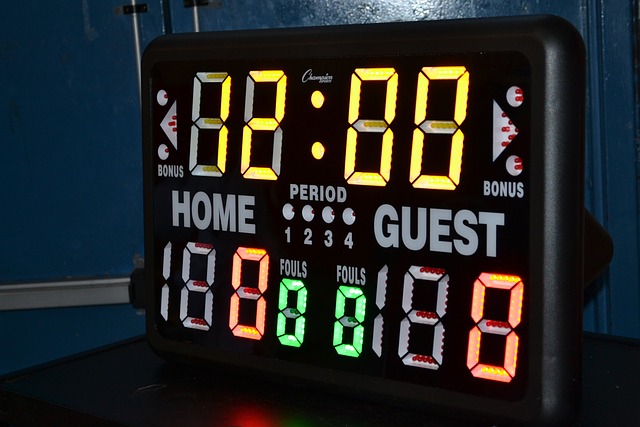The convergence of technological advances means that a lot of huge display systems that previously required bespoke designs and solutions can now be handled using sophisticated, adaptable video wall technology.
One of the best examples of this in recent years is the evolution of the scoreboard, which started as a literal blackboard that was updated manually to reflect the progression of events, but now has become a huge spectacle, a tool for improving the in-stadium experience and a versatile marketing vehicle.
In 2020, the SoFi Stadium in Los Angeles completed construction of its 70,000 square-foot 4K Oculus video scoreboard, the largest scoreboard ever used for professional sports.
However, the story of the electronic scoreboard spans over a century and includes considerable development, adaptation and scaling up of what was often quite limited technology.
From Cards To Light Bulbs
Exactly what was the first scoreboard is unclear, and the concept appears to be far more recent than the stadiums they are often housed in today.
Greek stadia and Roman colosseums did not appear to have scoring tables of any kind but whether that is because they did not exist or the evidence of their use was simply lost to time is uncertain.
The first scoreboard that we are aware of was used for one of the first modern professional sports.
In 1858, the four-year-old Melbourne Cricket Ground implemented a huge but relatively simple card-based scoreboard that had the names of batters, bowlers, over numbers, runs and wickets, which would provide the viewing audience better context for how the game was going.
The relatively slow nature of cricket made it perfect for hand-operated scoring boards, and they would spread from Australia to the United Kingdom, becoming very popular for the then-nascent sport of association football.
Football is a much faster game than cricket, but its relatively low-scoring nature means that scorers do not have much difficulty keeping track of scores that seldom reach double digits in 90 minutes.
Parallel to this development, chalkboards had started to be used to track baseball scores since the 1870s, and by the 1890s had been superseded by the card-based scoreboards seen in other countries, although exactly who did this first is a matter of debate.
However, according to an 1888 newspaper report, the first ever electronic scoreboard in the world was built in South End Grounds, then the home of the Boston Beaneaters (now the Atlanta Braves).
This team, one of the oldest and most prestigious in the sport, featured a scoreboard that featured not only cards and chalk but also took full advantage of the then-new invention of the light bulb.
Using a system of controls and a person positioned near the outfield fence, an operator could register whether an umpire had called a particular pitch a ball or a strike, light up the number of balls, strikes and outs currently in play, as well as a marker symbolising a foul ball (before they were registered as strikes).
This was an innovation at the time and became increasingly vital as sporting events became so popular that the unamplified voice of the umpire became all but impossible to hear.
With that said, it would take until 1965 for the first animated scoreboard to appear at the
innovative Houston Astrodome and the first video board with replay capability appeared in 1976, with colour video being first found at Dodgers Stadium in 1980.
In the modern age, these early screens have been replaced with high-definition LED displays with incredible functionality, sophistication and versatility.
